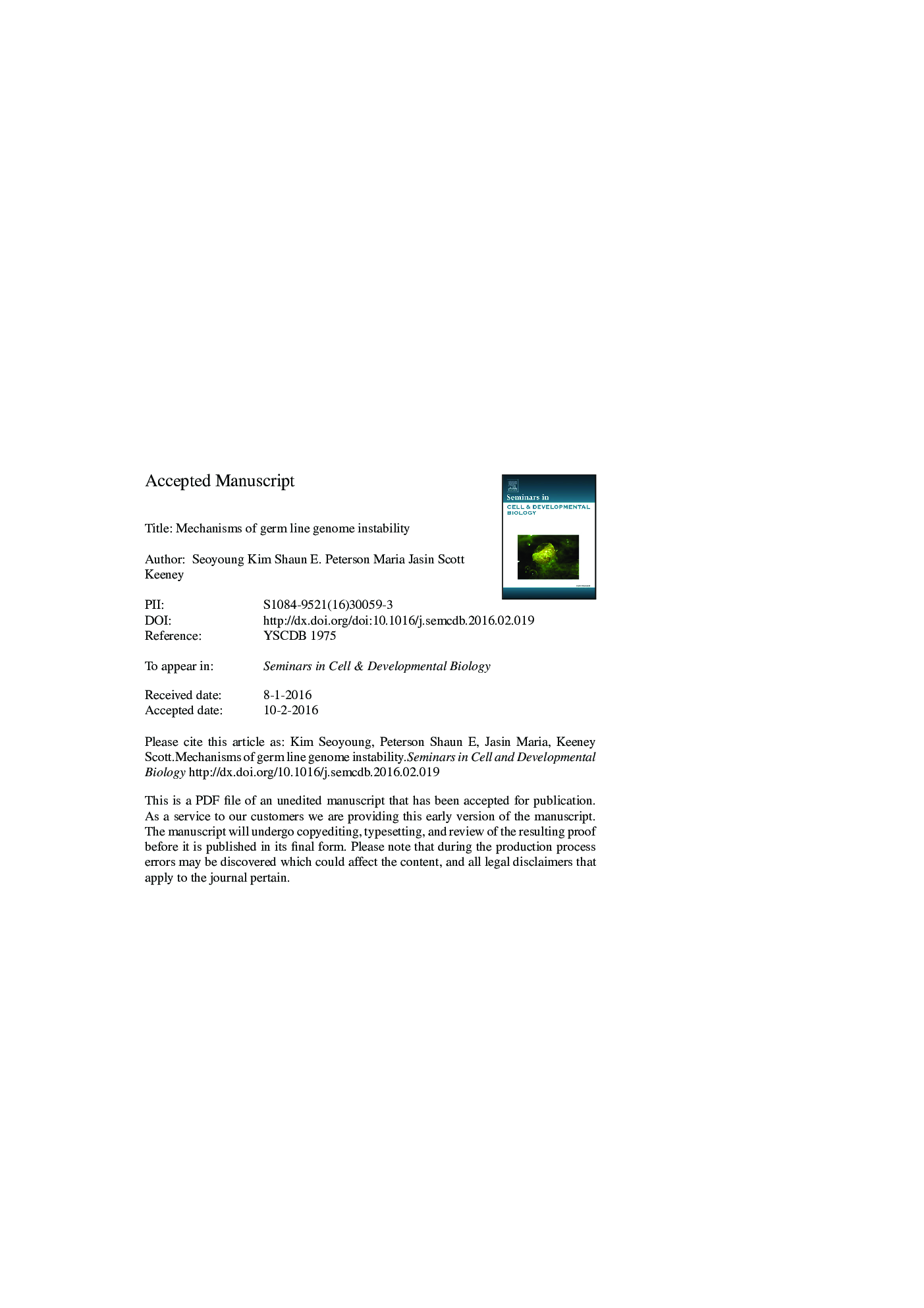| Article ID | Journal | Published Year | Pages | File Type |
|---|---|---|---|---|
| 8480073 | Seminars in Cell & Developmental Biology | 2016 | 27 Pages |
Abstract
During meiosis, numerous DNA double-strand breaks (DSBs) are formed as part of the normal developmental program. This seemingly destructive behavior is necessary for successful meiosis, since repair of the DSBs through homologous recombination (HR) helps to produce physical links between the homologous chromosomes essential for correct chromosome segregation later in meiosis. However, DSB formation at such a massive scale also introduces opportunities to generate gross chromosomal rearrangements. In this review, we explore ways in which meiotic DSBs can result in such genomic alterations.
Keywords
LCRpoly(ADP-ribose)-polymeraseRobertsonian translocationsVDEMMEJTNRNAHRssDNADSBPARPNHEJSSACNVSingle-stranded DNATranslocationSingle-strand annealingHuntington diseasecopy number variationtrinucleotide repeatdouble-strand breaksRObMeiosisNon-allelic homologous recombinationHomologous recombinationmicrohomology-mediated end joiningNonhomologous end joining
Related Topics
Life Sciences
Biochemistry, Genetics and Molecular Biology
Cell Biology
Authors
Seoyoung Kim, Shaun E. Peterson, Maria Jasin, Scott Keeney,
